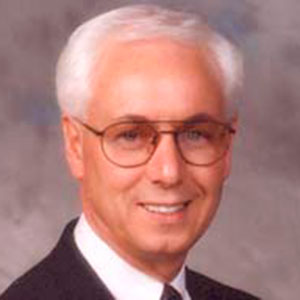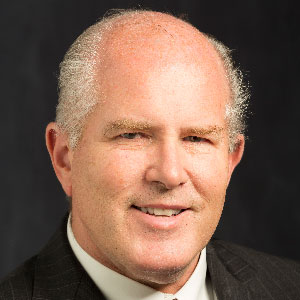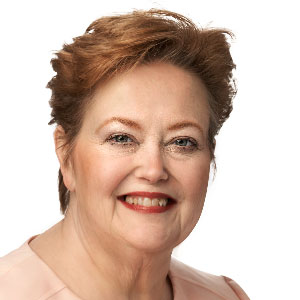In the early 1900s, because educational opportunities were rare, correspondence education increased in popularity within the United States. Adventist educators at Walla Walla College in Washington state and Keene Academy in Texas had attempted to develop correspondence schools. Goodloe Harper Bell, one of the early founders of Adventist education, hoped to develop such an organization.1 Taking inspiration from Bell, and after attending a conference on the successes of correspondence schools, Frederick Griggs, secretary of education for the General Conference, envisioned educating people around the world through a similar method.2 As a result, in 1909 he launched the Fireside Correspondence School, with the goal of providing the benefits of an education to those unable to attend traditional schools.3
Within two years, the Fireside Correspondence School was offering 11 secondary courses and nine college courses. By 1916, its students represented nearly every state and province in the United States and Canada as well as 12 other countries.4 After his appointment in 1923, Principal Mahlon E. Olsen rapidly expanded the work of the Fireside Correspondence School. By 1930, its enrollment had grown to be the largest of any school within the denomination.5
In 1931, the Fireside Correspondence School was renamed Home Study Institute. At that time, it had an enrollment of more than 2,700 students, representing over 50 countries. In 1982, the school was renamed Home Study International (HSI). In 1990, Griggs University/Home Study International was created, with Griggs University serving as the degree-granting branch of HSI. Also in 1990, Griggs, which had operated for six decades in Takoma Park, Maryland, U.S.A., moved its headquarters to nearby Silver Spring. Griggs was granted permission by the Maryland Higher Education Commission to offer degree programs in several disciplines. At that point, the Griggs board of directors assigned names to each of its academic divisions: Home Study Elementary School, Home Study High School, and Griggs University,6 all of which were fully accredited.
In 1991, Griggs began offering college degrees to international students who would otherwise have had no access to a Seventh-day Adventist campus. In 2003, the board voted to name the K–12 division Griggs International Academy. These name changes were registered with the State of Maryland and various accrediting agencies. In 2006, the name “Home Study International” was retired, and its preschool, elementary, secondary, and university offerings were given the combined name of Griggs University and Griggs International Academy in honor of founder Frederick Griggs.7 Online courses were developed, providing a new learning environment for students.
In 2009, the Seventh-day Adventist Church formed a Commission on Distance Education Models and Structure to conduct an in-depth investigation of best practices for distance education and to make recommendations on expanding its distance-education offerings to better meet the needs of a rapidly growing worldwide constituency.8
In October 2010, the commission brought a formal recommendation to the General Conference Annual Council meetings and Niels-Erik Andreasen, president of Andrews University (Berrien Springs, Michigan, U.S.A.), that ownership of Griggs University and Griggs International Academy be transferred to Andrews University. Andrews University faculty and administration also met and deliberated on the impact that ownership of Griggs would make upon the university structure.9
Those deliberations were informed by a long-term partnership that had already been enjoyed between Griggs University and Andrews University, as they offered distance-education degree programs through Griggs, and as the university had also been offering its own array of online courses and programs through its academic schools.
At the same time, the Andrews University board of trustees considered a plan to fully merge Griggs and Andrews University. After researching many models and possible working relationships, Provost Andrea Luxton (who became president of Andrews University in 2016) presented a plan to the Andrews University board of trustees at its October 2010 meeting, recommending that Griggs University/Griggs International Academy be formally integrated into the general university structure as part of the new School of Distance Education.10
With this new plan, there would no longer be a president for Griggs. Instead, it would be overseen by an Andrews University academic dean and two associate deans (one for higher education and one for K–12) who would serve in place of vice presidents. General services for Griggs University (records, admissions, marketing, human resources, technology services, enrollment, and finances) would be handled by personnel dedicated to Griggs but embedded and working within the various Andrews University departments handling those services for the entire university. These basic concepts—the creation of an Andrews University School of Distance Education by merging Griggs University and Andrews University and the embedding of Griggs services on campus—became important guiding principles in the transition process. They also helped provide a structure to strengthen both the management and support of the church’s online education.
At the same October 2010 Andrews University board of trustees meeting, it was also voted to ask Alayne Thorpe, then president of Griggs University/Griggs International Academy, to serve as the dean of the School of Distance Education. She was given the title of interim president of Griggs University/Griggs International Academy, as well, to fulfill specific procedural and legal needs for Griggs during this time of transition.11
After analyzing the physical administrative and teaching space required, Andrews University purchased a building on the edge of its campus that had been built and owned by the Lake Union Conference of Seventh-day Adventists. The first floor of the second wing of that building, and several offices on its second floor, provided spaces for the newly formed School of Distance Education/Griggs University and Griggs International Academy.
In a nod to both a shared history and the integration and operation of Griggs University and Griggs International Academy on the Andrews University campus, the entire building space was renamed Griggs Hall after Frederick Griggs, the founder of the Fireside Correspondence School, which later became Griggs University/Griggs International Academy, and a person who was also important to the history and development of Andrews University.
Following the Griggs University physical move to and integration with Andrews University, completed in 2011, other organizational changes occurred, including the renaming of the Griggs University Consortium, which became the Consortium of Adventist Colleges and Universities.12 That consortium was later fully integrated into the Andrews University School of Distance Education & International Partnerships. At that point, all Griggs University courses and degrees were fully integrated into Andrews University coursework and degrees, and Griggs University no longer operated as a distinct entity.
At the same time, the School of Distance Education & International Partnerships then fully coordinated all operations of the Consortium of Adventist Colleges and Universities. The newly formed School of Distance Education & International Partnerships continued to offer oversight for all international programs owned and operated by Andrews University.
In 2019, following an academic restructuring, Griggs International Academy—which continues to operate globally—became a formal part of the Andrews University College of Education & International Services.13
In addition to offering programs directly to students, Griggs International Academy and the Andrews University College of Education & International Services work in partnership with a number of Adventist and other private and public institutions around the world to provide religion and business programs to local populations, modeling these international agreements after processes first established by Andrews University.
From its early years, when it operated out of a one-room office at the General Conference, Griggs has focused on the goal of operating a worldwide school system that maintains high scholastic standards, using the services of qualified professionals committed to the Adventist education mission in all phases of its operation. In turn, people from all walks of life have discovered that a private correspondence school, or online study, helped them develop self-reliance, independent thinking, and responsibility. And, since it began in the early 1900s, the Griggs system has emphasized a personal focus in its student-teacher relationships, giving students guidance and tutoring however it is needed.
Today, correspondence schools and distance education continue to play a vital role in the educational development of students in many parts of the world and within the global Seventh-day Adventist school system. More than a century later, more than 300,000 students have been impacted through a variety of distance studies options offered over the years by the Fireside Correspondence School, Home Study Institute, Home Study International, Griggs University/Griggs International Academy, Andrews University School of Distance Education/Griggs University, Andrews University School of Distance Education & International Partnerships, and Andrews University College of Education & International Services.14
Recommended citation:
Donald R. Sahly, Stephen Payne, and Alayne Thorpe, “Griggs International Academy and Griggs University,” The Journal of Adventist Education 85:4 (2023): 39-44. https://doi.org/10.55668/jae0059
Adapted and reprinted with permission from the Encyclopedia of Seventh-day Adventists, encyclopedia.adventist.org. Copyright of the General Conference Corporation of Seventh-day Adventists.
NOTES AND REFERENCES
- Ellen G. White Estate, “Pathways of the Pioneers”: https://whiteestate.org/resources/pioneers/gbell/.
- Don F. Neufeld, ed., Seventh-day Adventist Encyclopedia (Hagerstown, Md.: Review and Herald, 1996), 706, 707; Floyd Greenleaf, In Passion for the World: A History of Seventh-day Adventist Education (Nampa, Idaho: Pacific Press, 2005),7 6, 77, 492.
- Gary Land, Historical Dictionary of the Seventh-day Adventists (Lanham, Md.: Scarecrow Press, 2005), 157.
- _______, The A to Z of the Seventh-day Adventists (Lanham, Md.: Scarecrow Press, 2009), 136.
- John Wesley Taylor V, “A Safe Place Without Walls,” Adventist World (June 29, 2018): https://www.adventistworld.org/a-safe-place-without-walls/.
- P. Clint Rogers and Scott L. Howell, “Use of Distance Education by Religions of the World to Train, Edify, and Educate Adherents,” International Review of Research in Open and Distance Learning 5:3 (2004): 11.
- Milton Gaither, Homeschool: An American History (London, U.K.: Palgrave Macmillan, 2008), 79.
- Baker’s Guide: Christian Online Learning: https://www.bakersguide.com/directory/griggs-university/griggs-university
- Ansel Oliver, “Griggs Could Move to Andrews Following Oversight Transfer,” Adventist News Network (October 12, 2010): https://adventist.news/news/griggs-could-move-to-andrews-following-oversight-transfer/.
- “Fall Board of Trustees Report” (October 28, 2010): https://www.andrews.edu/news/2010/10/fall_board.html.
- “Griggs Moving From Maryland to Michigan” (July 8, 2011): https://www.andrews.edu/news/2011/06/griggs_moving.html.
- “School of Distance Education,” Andrews University Bulletin, 2013–2014: https://bulletin.andrews.edu/preview_entity.php?catoid=4&ent_oid=201&returnto=255.
- “Distance Education at Andrews”: https://www.andrews.edu/distance/about/index.html.
- “Griggs History”: https://www.andrews.edu/distance/griggs/#collapse6; Greenleaf, In Passion for the World: A History of Seventh-day Adventist Education, 492.










